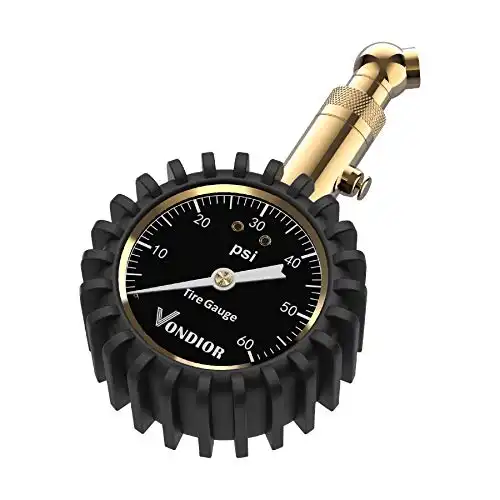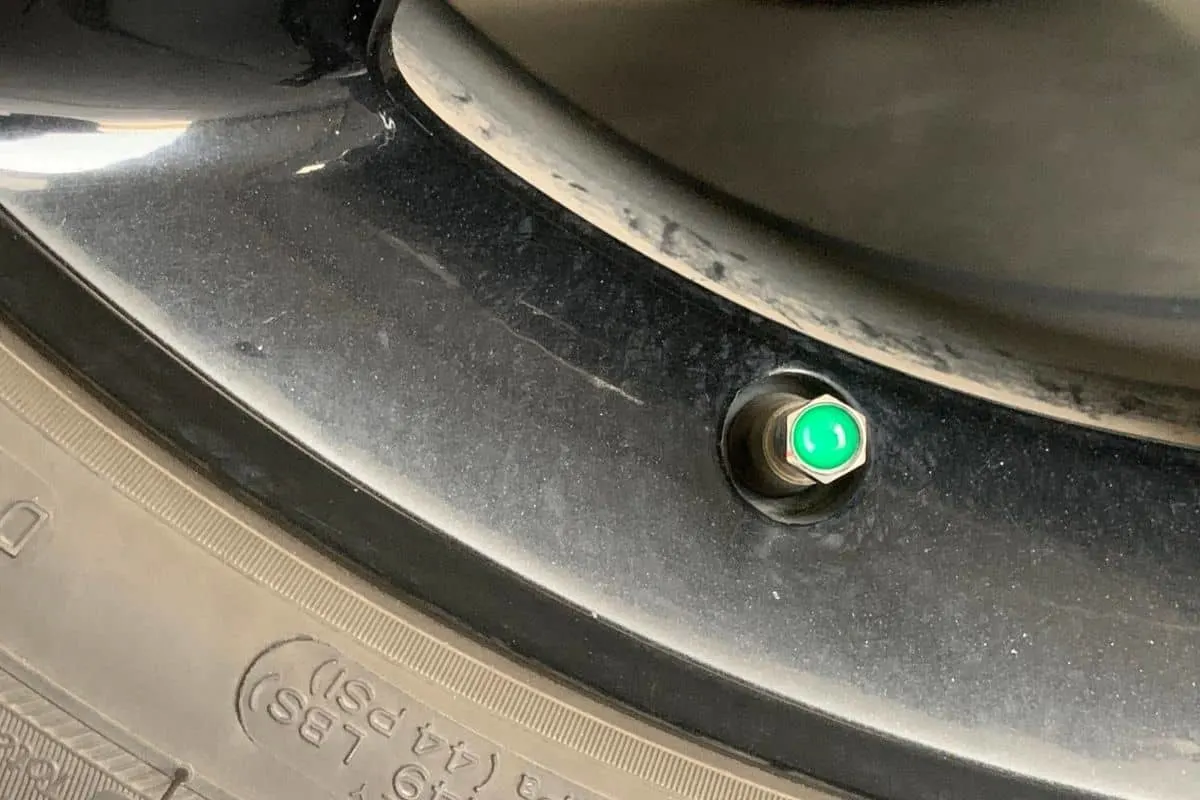Most of us do not stop to think about the plastic caps on our car tires; yet, they play a vital role as they secure the valve on our tires from rain and dirt. They also make sure air does not seep out of your tire while driving.
A green cap on a tire valve stem indicates that the tires have been filled with nitrogen instead of plain air. Nitrogen has been shown to keep tires inflated longer and at a more consistent pressure.
Many car professionals, including tire technicians or dealers, repair centers, and some gas stations, promote nitrogen as the better option.
The reason behind these claims is that nitrogen takes longer to leak, and the tires remain fully pressurized for extended periods. Let’s examine what makes this gas so valuable!
Why Use Nitrogen?
Normal air, which we breathe and fill up our car tires, comprises 78% nitrogen, 21% oxygen, and 1% other gasses. The other gasses include carbon monoxide plus argon.
Filling up the tires with nitrogen increases the level of nitrogen to 93% or even 95%. This level of nitrogen is simply regarded as “pure.”
Consumer Reports indicate that tires with nitrogen waste 2.2 pounds per square inch (PSI) every year. This is more reliable compared to the 3.5 PSI lost on tires filled with air!
ConsumerReports.org
The reason for this difference is that the molecules in nitrogen are larger and move much slower than molecules in compressed air. This means that pressure in nitrogen-filled tires will last a lot longer.
Nitrogen is inert, meaning it only contains gas particles. Nitrogen pumped in the tires is pure as well as dry. There are no water molecules that would otherwise destroy the aluminum parts of the tire.
More Benefits of Filling Our Car Tires with Nitrogen
- Suitable and regular air pressure in the tires results in better fuel regulation.
- Nitrogen makes the tires a bit sturdier which moderately improves the handling of the car.
- The tires suffer slighter wear since the pressure remains constant and no water vapor is present within the tires.
- Nitrogen is not combustible. While this is not as important, it is helpful.
The Disadvantage of Using Nitrogen in Tires
Nitrogen has been proven to contribute to long-term tire performance, but filling costs are higher than with regular air.
Many gas stations charge a dollar or less for compressed air.
Is Nitrogen Essential?
Yes, nitrogen is essential for some cars! Filling car tires with nitrogen is a common trend within the auto industry.
Popular among high-end models, such as Corvettes, Ford GT, Audi R8 require nitrogen-filled tires to achieve maximum performance.
While it is more expensive, some consider nitrogen to be the best option for a smoother ride and less wear and tear on one’s tires.
Why The Valve Cap Is Important
The tire valve cap protects the valve stem from grease, ice, or road dust, no matter the color.
When the valve stem gets clogged by this debris, it makes the tire inflation process strenuous. If the tires do not have a cap, air or nitrogen will gradually leak out, ultimately resulting in a flat tire.
To find out more about these green caps, here are some of the most frequently asked questions.
How Do I Remove a Tire Cap?
- Turn the wheel to position the valve cap upside down
- Use pliers that have a snub nose to grip the bottom of the valve stem firmly
- Twist the cap using a different pair of pliers until it’s free.
Where Can I Get a Nitrogen Refill for My Tires?
- All tire centers in the country. They can either sell an already filled-up tire or fill up an existing tire.
- Car dealerships usually fill up the tires of certain cars with nitrogen.
- Automotive centers.
Can I Purchase Nitrogen for My Tires?
Yes. Nitrogen is gradually gaining popularity as a better option as opposed to ordinary air. Nitrogen is available for purchase in Costco, tire dealers, car dealerships, and stores dealing in welding gases.
The Proper Way of Determining Tire Pressure
Automakers will record the precise inflation level of the tires in the vehicle’s manual. There is also a sticker situated on the driver’s doorjamb. On the sticker is also information on the weight limitation of the car.
Sidewall labeling on tires indicates the maximum pressure the tire can withstand. It does not indicate the vehicle’s maximum approved pressure. The sidewall labeling is often mistaken to be part of the approval of the vehicle.
The proper way to tell tire inflation is to use a pressure gauge. This returns correct readings on the PSI.

The best recommended time to check the tires is when they are cool. Preferably in the mornings before starting the engine.
Temperatures outside might change the tire pressure by approximately 1 PSI for every 10 degrees.
High temperatures return high PSI records since the black tires draw in heat. Fall and winter seasons are the most important seasons of the year to check tire pressure.
During these seasons, the average temperatures fall as the days are shorter.
Conclusion
The Rubber Manufacturers Association, a tire manufacturers trade group, agrees that nitrogen promotes prolonged tire pressure. They also emphasize that using nitrogen should not replace regular tire pressure maintenance.
While nitrogen-filled tires may take us longer between refills, we recommend carrying out regular tire maintenance despite the type of air in tires.
